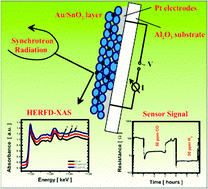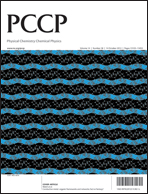An Au clusters related spill-over sensitization mechanism in SnO2-based gas sensors identified by operando HERFD-XAS, work function changes, DC resistance and catalytic conversion studies
Abstract
The role of Au additives in SnO2-based thick film gas sensors was investigated by a combination of operando investigation techniques, namely spectroscopic high energy resolved fluorescence detected


 Please wait while we load your content...
Please wait while we load your content...